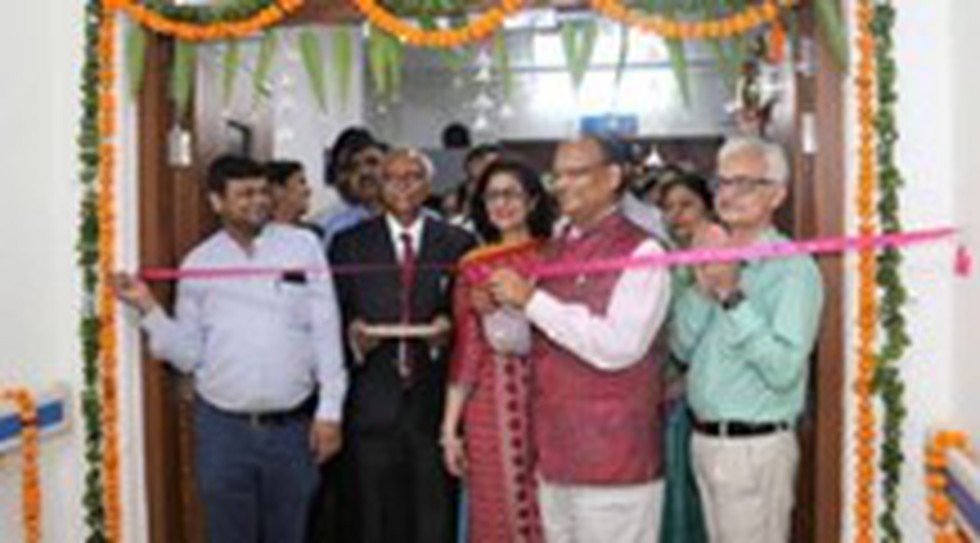
About Skin Bank:
- A skin bank is a place where cadaveric skin is processed and preserved under optimal conditions from where it can be used for the benefit of Burn victims.
- Skin can be donated after Death within 6 hours from the time of Death.
- Anyone can Donate Skin irrespective of sex & blood group; the minimum age of the donor should be 18 years.
- There is no upper age limit; even a 100-year-old person can donate his skin, and it will be used for treatment.
- The skin of persons suffering from AIDS, Hepatitis B & C, Sexually Transmitted Diseases, Skin Cancer, Active skin Disease and Septicemia are considered unfit for donation.
- At the time of skin harvesting, a blood sample from the body of the deceased is also taken, and a necessary test for HIV, Viral markers & Hepatitis is carried out at the Skin Bank.
- An old history of trauma or old history of burns does not make the donor unfit for skin donation.
- Skin is generally preserved in 85% glycerol solution. It is stored between 4-5 degree Celsius, and it can be stored for a period of up to 5 years.
- The country has 16 skin banks — a facility where the skin of deceased persons can be donated — with seven in Maharashtra, four in Chennai, three in Karnataka, and one each in Madhya Pradesh and Odisha.

About the South African Customs Union (SACU)
- It is the world’s oldest customs union which was established in 1910.
- Member countries: South Africa, Namibia, Botswana, Lesotho, and Eswatini (formerly Swaziland).
- Head Quarter: Windhoek (Namibia)
- It was administered by South Africa through the 1910 and 1969 Agreements.
- The customs union collected duties on local production and customs duties on members’ imports from outside SACU, and the resulting revenue was allocated to member countries in quarterly instalments utilising a revenue-sharing formula.
- Negotiations to reform the 1969 Agreement started in 1994, and a new agreement was signed in 2002. The new arrangement was ratified by SACU Heads of State.
- The Economic structure of the Union links the Member states by a single tariff and no customs duties between them.
- The Member States form a single customs territory in which tariffs and other barriers are eliminated on substantially all the trade between the Member States for products originating in these countries, and there is a common external tariff that applies to nonmembers of SACU.
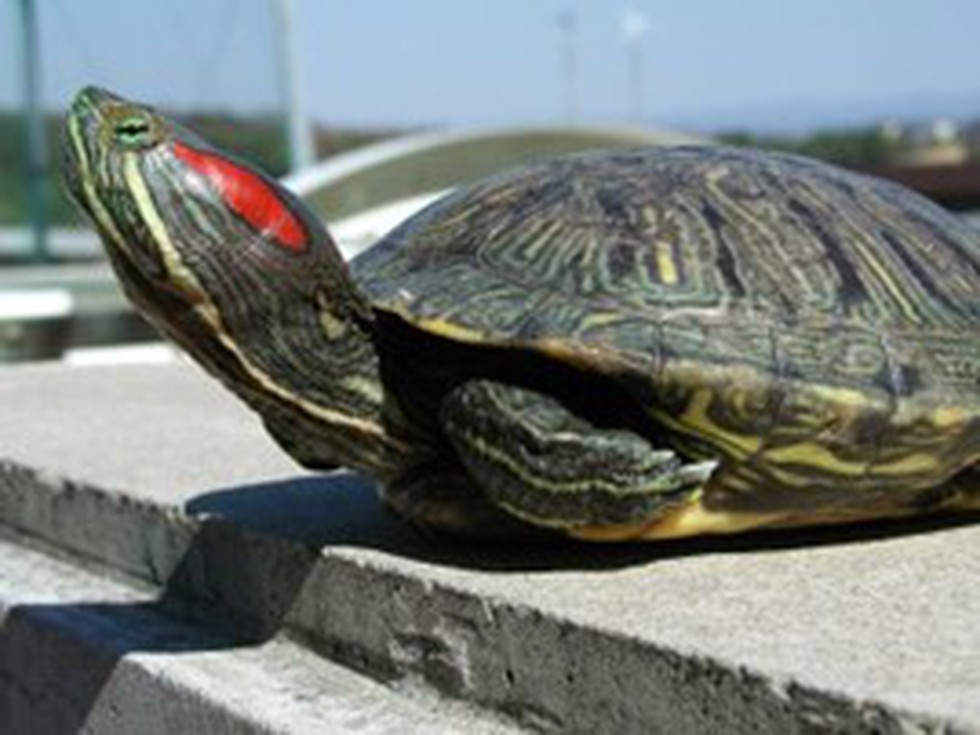
About Red-eared sliders turtle:
- It is native to the southeastern USA and Mexico.
- It is a semi-aquatic turtle from fresh and brackish water ecosystems.
- It spends the majority of its time either in the water foraging or basking on rocks and logs.
- The species is considered one of the world’s 100 worst invasive non-native species.
- Appearance
- It is known for its distinct red stripes behind each ear.
- They range in colour from dark green to brown, with yellowish ribbons all over their green bodies and along the edge of their dark olive-green shell.
- In the wild, red sliders can live from 20 to 50 years.
- Diet: These are fed mainly on plants and small animals, such as crickets and fish etc.
- Conservation status
- IUCN: Least Concern
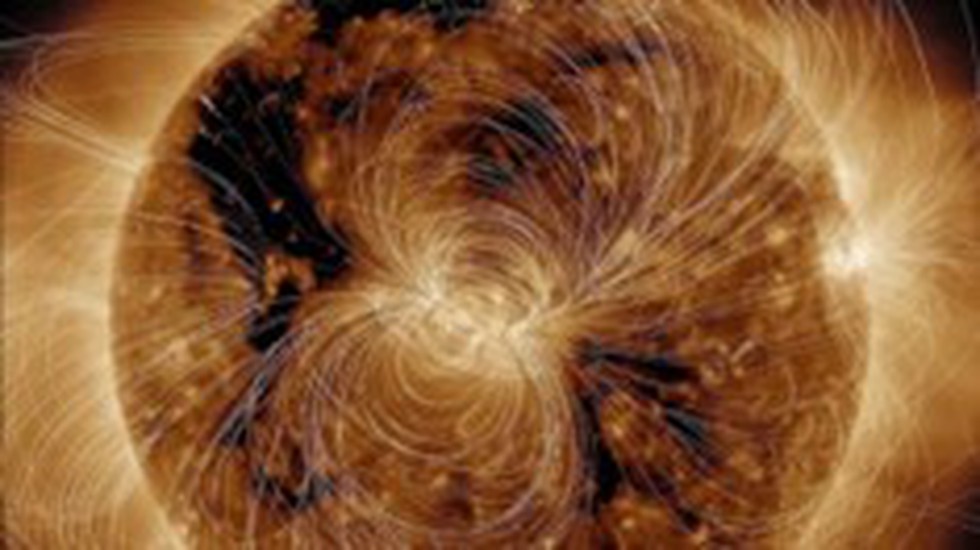
Why in the news?
- According to the Department of Science and Technology, scientists are now one step closer to identifying the source of the Solar Mean Magnetic Field (SMMF).
About Solar Mean Magnetic Field:
- It is the mean value of the line-of-sight (LOS) component of the solar vector magnetic field averaged over the visible hemisphere as well as its relationship with Interplanetary Magnetic Field (IMF).
- The sun contains the corona (the outer shell of the sun’s atmosphere), the photosphere (the visible surface), and the chromosphere (near-transparent layer, just above the photosphere) with the magnetic field generated by electrical currents acting as a magnetic dynamo inside the sun.
- However, so far, the studies on the SMMF have mostly been confined to the magnetic field measurements at the photosphere.
- New Findings:
- Scientists, in their quest to understand if and how the SMMF at chromospheric heights is related to the SMMF at photospheric heights, have found a very good similarity between the two.
- The value of chromospheric SMMF is lower than the photospheric SMMF, thereby suggesting that the primordial magnetic field inside the sun could be a source of the SMMF.
- They calculated and analysed the SMMF using magnetic field measurements at the chromosphere in conjunction with that of photospheric measurements.
- These electrical currents are generated by the flow of hot, ionised gases in the sun’s convection zone.

About the Order of the Nile Award:
- It is Egypt’s highest state honour.
- Instituted in 1915, the ‘Order of the Nile’ is conferred upon Heads of state, Crown Princes, and Vice-Presidents who offer Egypt or humanity invaluable services.
- The ‘Order of the Nile’ is a pure gold collar consisting of three-square gold units comprising Pharaonic symbols.
- The first unit resembles the idea of protecting the state against evils, the second one resembles prosperity and happiness brought by the Nile, and the third one refers to wealth and endurance.
- The three units are connected by a circular gold flower decorated with turquoise and ruby.
- Hanging from the collar is a hexagonal pendant decorated with flowers of the Pharaonic style and turquoise and ruby gems.
- In the middle of the pendant, there is a protruding symbol representing the Nile that brings together the North (represented by the Papyrus) and the South (represented by the Lotus).
- Those who receive the 'Order of the Nile' shall be saluted upon their death.
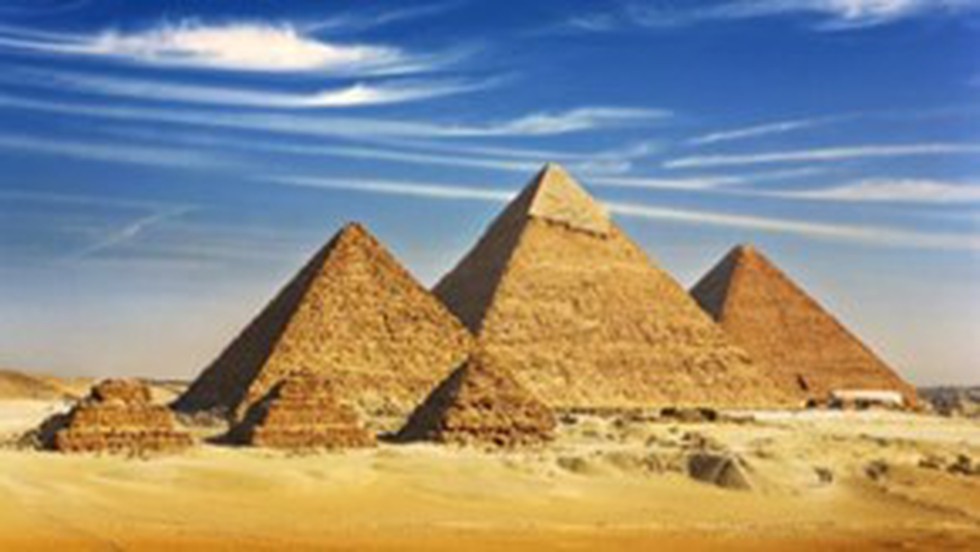
About the Great Pyramid of Giza:
- The Great Pyramid of Giza also called the Great Pyramid and the Great Pyramid of Khufu, is an ancient Egyptian pyramid that is the largest of the three Pyramids of Giza.
- Location: It is located on the Giza plateau on the west bank of the Nile River near the modern city of Cairo in Egypt.
- It was built by Khufu (Cheops), the second king of Egypt’s 4th dynasty(c. 2575–c. 2465 BCE), and was completed about 2560 BCE.
- The pyramid was first excavated using modern techniques and scientific analysis in 1880 by Sir William Matthew Flinders Petrie (l.1853-1942), the British archaeologist.
- Features:
- It is the largest Egyptian pyramid which rises to a height of 479 feet (146 metres) with a base of 754 feet (230 metres) and is comprised of over two million blocks of stone.
- The pyramid’s sides rise at an angle of 51.87° and are accurately oriented to the four cardinal points of the compass.
- The Great Pyramid’s core is made of yellowish limestone blocks, and the inner passages are of finer light-coloured limestone.
- The interior burial chamber is built of huge blocks of granite.
Key facts about the Pyramids of Giza:
- These are three 4th-dynasty (c. 2575–c. 2465 BCE) pyramids erected on a rocky plateau on the west bank of the Nile River in northern Egypt.
- The designations of the pyramids—Khufu, Khafre, and Menkaure—correspond to the kings for whom they were built.
- The northernmost and oldest pyramid of the group was built for Khufu, the second king of the 4th dynasty.
- The middle pyramid was built for Khafre, the fourth of the eight kings of the 4th dynasty.
- The southernmost and last pyramid to be built was that of Menkaure, the fifth king of the 4th dynasty.

About Liberalised Remittances Scheme (LRS):
- LRS allows Indian residents to freely remit up to USD $250,000 per financial year for current or capital account transactions or a combination of both. Any remittance exceeding this limit requires prior permission from the RBI.
- The scheme was introduced by RBI on February 4, 2004.
- Who can remit funds under LRS?
- Only individual Indian residents, including minors, are permitted to remit funds under LRS.
- Corporates, partnership firms, HUF, trusts, etc., are excluded from its ambit.
- Frequency of Remittances:
- There are no restrictions on the frequency of remittances under LRS.
- Once a remittance is made for an amount up to USD 2,50,000 during the financial year, a resident individual would not be eligible to make any further remittances under this scheme.
- Types of transactions permitted:
- Opening of foreign currency accounts abroad with a bank;
- Acquisition of immovable property abroad, overseas direct investment (ODI), and overseas portfolio investment (OPI);
- Extending loans, including loans in Indian Rupees to non-resident Indians (NRIs) who are relatives as defined in the Companies Act, 2013;
- Private visits abroad(excluding Nepal and Bhutan);
- Maintenance of relatives abroad;
- Medical treatment abroad;
- Pursuing studies abroad;
- The Union Budget 2023 introduced a Tax Collection at Source (TCS) for outward foreign remittance under LRS (other than for Education and medical purpose) of 20% on the entire value.
- Tax liability on profit made: If any profit is made on foreign investments made under LRS, it is taxable in India based on how long the investment was held.
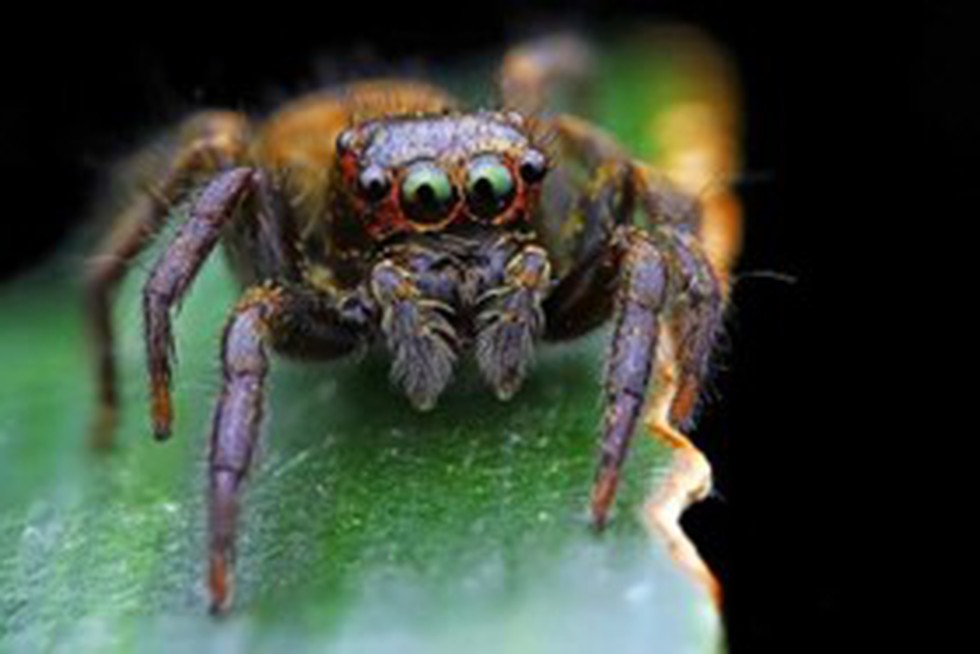
About Hasarius Mumbai:
- It is a newly discovered species of jumping spider.
- These are spiders who, instead of trapping their prey in a web, stalk and hunt them by pouncing.
- It has multiple eyes that give a 360-degree view of its surroundings and a bulbous body covered in hair.
- The word ‘Hasarius’ refers to a genus that ranks the species — of ‘jumping spiders’ in the ‘salticidae’ family.
- This genus, first discovered in the year 1826, occurs primarily in warm climates.
- In India, there are only two other Hasarius species which have been documented, namely H. Adansoni, which is found across the country, including in urban areas, and kjellerupi, which was documented from the Nicobar Islands.
Bombay Natural History Society (BNHS):
- It is a Non-Governmental Organisation in India engaged in conservation and biodiversity research.
- BNHS has been designated as a 'Scientific and Industrial Research Organisation'by the Department of Science and Technology.
- BNHS is the partner of BirdLife International in India. BirdLife International is a global partnership of conservation organisations that strives to conserve birds, their habitats and global biodiversity. It is headquartered in Cambridge, UK.
- Headquarters: BNHS is headquartered in the specially constructed 'Hornbill House' in southern Mumbai.
- The BNHS logo is the great hornbill.
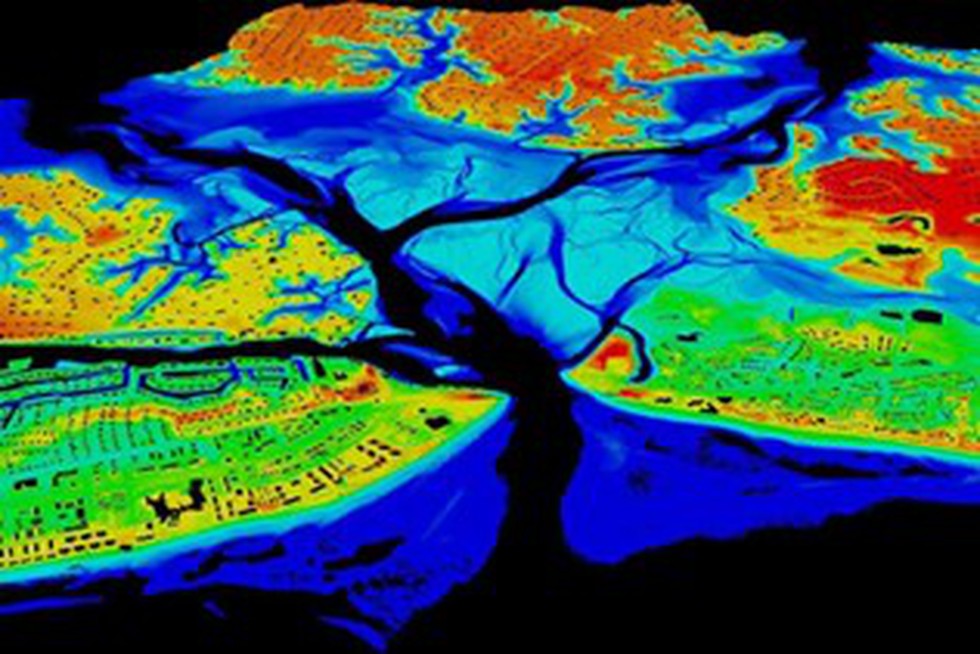
About LiDAR:
- LiDAR, which stands for Light Detection and Ranging, is a remote sensing method that uses light in the form of a pulsed laser to measure ranges (variable distances) to the Earth.
- These light pulses—combined with other data recorded by the airborne system — generate precise, three-dimensional information about the shape of the Earth and its surface characteristics.
- There are three primary components of a LiDAR instrument — the scanner, laser and GPS receiver.
- Aeroplanes and helicopters are the most commonly used platforms for acquiring lidar data over broad areas.
- Two types of lidar are,
- Topographic lidar: It typically uses a near-infrared laser to map the land.
- Bathymetric lidar: It uses water-penetrating green light to also measure seafloor and riverbed elevations.
- How does LiDAR work?
- A LiDAR system measures the time it takes for emitted light to travel to the ground and back.
- That time is used to calculate the distance travelled.
- Distance travelled is then converted to elevation.
- Applications:
- Lidar systems allow scientists and mapping professionals to examine both natural and manmade environments with accuracy, precision, and flexibility.
- It is used to produce more accurate shoreline maps, make digital elevation models for use in geographic information systems, assist in emergency response operations, and in many other applications.
What is Remote Sensing?
- Remote sensing is the science of obtaining information about objects or areas from a distance, typically from aircraft or satellites.
- Remote sensors can be either passive or active.
- Passive sensors respond to external stimuli. They record natural energy that is reflected or emitted from the Earth's surface. The most common source of radiation detected by passive sensors is reflected sunlight.
- Active sensors use internal stimuli to collect data about Earth. For example, a laser-beam remote sensing system projects a laser onto the surface of the Earth and measures the time that it takes for the laser to reflect back to its sensor.
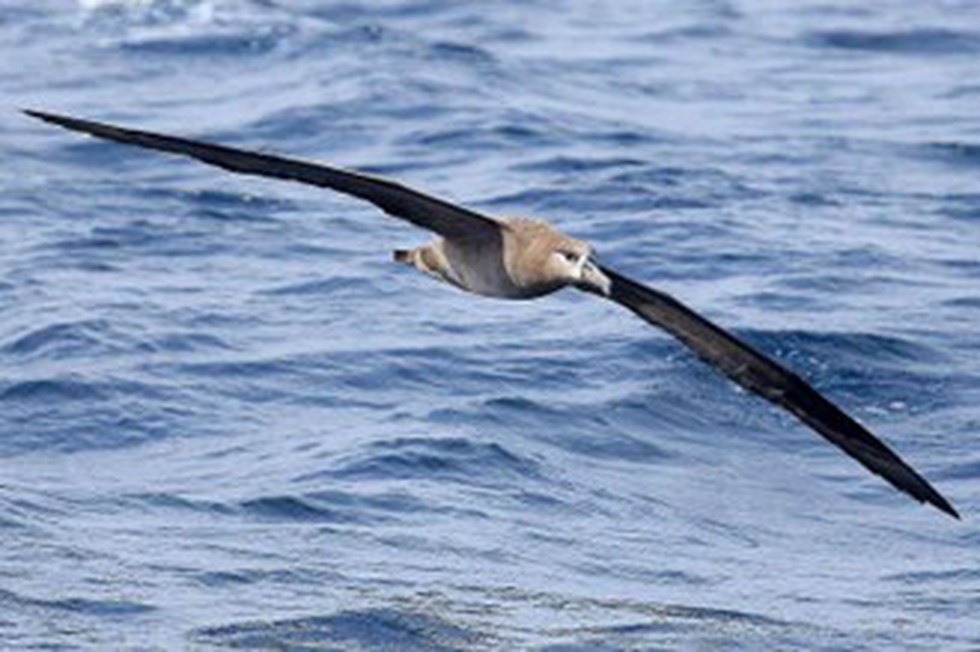
About Pelagic Birds:
- These are seabirds that live on open seas and oceans rather than inland or around more restricted waters such as lakes and rivers.
- They can be found thousands of miles offshore but can get blown onto land during high winds and storms.
- The only other time they come inland is to breed.
- The most familiar types of pelagic birds include albatrosses, frigatebirds, fulmars, petrels, shearwaters, and tropicbirds.
- Features:
- They feed on planktonic crustaceans and squid and hunt fish far from the land.
- Generally, they have dense, waterproof feathers and layers of fat to keep them warm.
- They have exceptionally long and thin wings that allow them to fly effortlessly for long periods without rest.
- Many pelagic birds have special salt glands. This allows them to drink seawater and discard extra salt accidentally ingested by their oceanic prey.
- Some have webbed or partially webbed feet for swimming, plucking fish from the shallows, or executing precise, plunging dives.
- In general, seabirds live longer than other wild birds; most have an average lifespan of 50 years.
- Almost all seabirds live in colonies, migrate annually, and mate for life.


.png)
.png)
.png)
























































































































































.png)
.png)
.png)
.png)
.png)


.png)
.png)
.png)





.png)
.png)






.png)
.png)
.png)
.png)
.png)
.png)
.png)
.png)
.png)

.png)







.png)
.png)


.png)
.png)
.png)


.png)

.png)
.png)





.jpg)

.png)
.png)


.png)

.png)
.png)
.png)

.jpg)

.jpg)


.png)

.png)
.png)
.png)
.png)
.png)
.png)
.png)
.png)
.png)
.png)




.png)

.png)





.png)
.png)
.png)
.png)
.png)
.png)
.png)
.png)
.png)
.png)
.jpg)
.jpg)

.png)
.png)
.png)
.png)
.png)
.png)
.png)
.png)
.png)
.png)
.png)
.png)
.png)
.png)
.png)
.png)
.png)
.png)
.png)



.png)
.png)

.jpg)
.jpg)


.jpg)
.jpg)
.jpg)
.jpg)
.jpg)

.jpg)








.jpg)
.jpg)
.jpg)
.jpg)
.jpg)

















.jpg)
.jpg)







.jpg)


















.jpg)
.jpg)






























































































.jpg)
.jpg)


























.jpg)

.jpg)










.jpg)








.jpg)




.jpg)










.jpg)


















.jpg)












































.jpg)














.jpg)
.jpg)
.jpg)





.jpg)

.jpg)
.jpg)





































































.jpg)


































.jpg)
.jpg)
















































.jpg)












.jpg)


.jpg)




.jpg)
.jpg)
.jpg)

.jpg)
.jpg)
.jpg)
.jpg)

.jpg)
.jpg)
.jpg)

.jpg)
.jpg)
.jpg)
.jpg)
.jpg)
.jpg)
.jpg)
.jpg)

.jpg)


.jpg)
.jpg)
.jpg)
.jpg)
.jpg)
.jpg)
.jpg)
.jpg)
.jpg)
.jpg)











.jpg)
.jpg)





.jpg)
.jpg)
.jpg)
























.jpg)
























.jpg)









.jpg)
.jpg)







.jpg)
.jpg)









































.jpg)
.jpg)
.jpg)
.jpg)
.jpg)

.jpg)
.jpg)
.jpg)
.jpg)
.jpg)


.jpg)
.jpg)
.jpg)
.jpg)
.jpg)

.jpg)
.jpg)
.jpg)
.jpg)
.jpg)
.jpg)
.jpg)
.jpg)
.jpg)
.jpg)
.png)

.png)
.png)

.png)
.png)
.png)
.png)


.jpg)
.jpg)

.jpg)
.jpg)
.jpg)

.png)
.png)
.png)
.png)
.png)
.png)
.png)

.png)
.png)
.png)
.png)
.png)
.png)
.png)
.png)
.png)
.png)





































































-min.png)



.png)




.png)








































